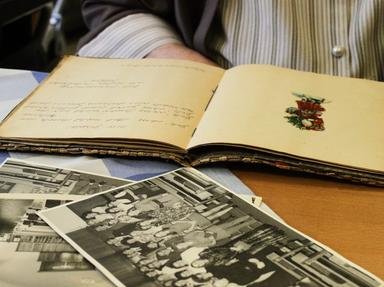Quiz Answer Key and Fun Facts
1. This 1906 Australian silent film about Ned Kelly has been recognized as the first ever full-length feature film. What's the film's title?
2. In the 1914 lost film "The Life of General Villa", two people featured as Mexican revolutionary Pancho Villa. The younger Pancho Villa is played by Raoul Walsh, but who starred as the older Pancho Villa?
3. In 1931, Greta Garbo starred as a Dutch-born high class exotic dancer who was exposed and executed as a German spy during World War I. What was the name of this secret agent and also of the film?
4. "Alexander Nevsky" is a 1938 film which celebrates the rout of the Teutonic knights in the Battle of the Ice in 1242. The peasant army is led by exiled Prince, and Russian hero-to-be, Alexander who is played by Nikolay Cherkasov. The stirring music is by Sergei Prokofiev, but who was the director of this Soviet masterpiece?
5. Cecil B. DeMille's religious epic "The Ten Commandments" was one of the biggest film productions ever at the time of its release in 1956. It had a fantastic cast of stars playing historical figures. Who played Rameses II?
6. "The Conqueror" is a 1956 film directed by Dick Powell and produced by Howard Hughes which is often on "worst film ever" lists. It starred John Wayne as the real life character it was about. Who was this conqueror?
7. The 1968 film "The Boston Strangler" stars Henry Fonda as Assistant Attorney General John Bottomly who hunts down the presumed criminal, Albert DeSalvo. Who plays DeSalvo?
8. In this Sidney Lumet-directed drama an NYPD plainclothes cop can no longer turn a blind eye to all the pay-offs he sees and opts to blow the whistle. What's the name of this 1973 film starring Al Pacino which takes its title from the name of the self-proclaimed "lamplighter"?
9. The brilliant biographic film "Into the Wild" based on a book by Jon Krakauer tells the story of college graduate Christopher McCandless and his ill-fated scheme to get away from civilization and live off the land. Where did he end up, eventually meeting his demise in 1992?
10. In 2015 a brilliantly-made documentary directed by Liz Garbus about the eclectic singer-songwriter and civil rights activist Nina Simone came out to much acclaim. What was it called?
Source: Author
thula2
This quiz was reviewed by FunTrivia editor
spanishliz before going online.
Any errors found in FunTrivia content are routinely corrected through our feedback system.

